So whether you’re puzzled by paintwork on the road or you’re a learner driver seeing them for the first time, our handy guide with real-world examples will help remind you what all the various lines, zig-zags and boxes really mean.
Across the road
Below are the most common road markings that will cross your path on the road:
Stop line at signals or police control
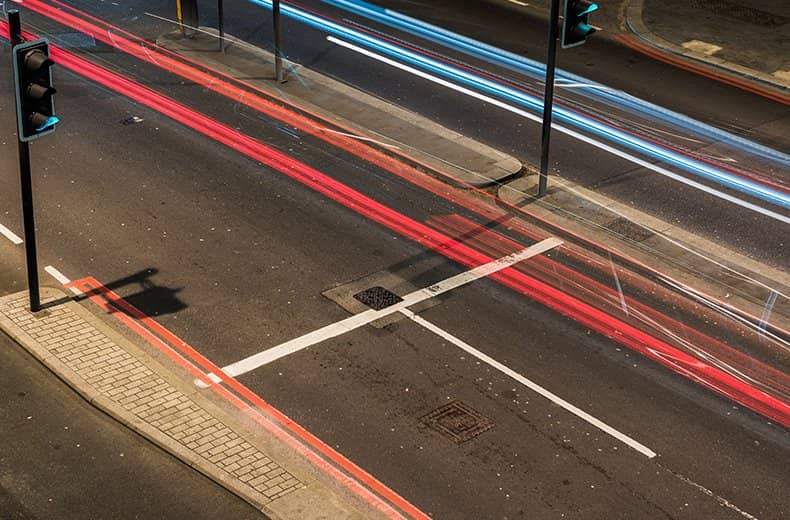
A white line across the road will appear alongside traffic lights or in some cases, in an area of police control. It’s important to stop before the line if directed to do so by traffic lights or a member of the police.
Remember to stop BEFORE rolling into a cycle box at the advanced stop line (ASL) if there is one. They look like this:
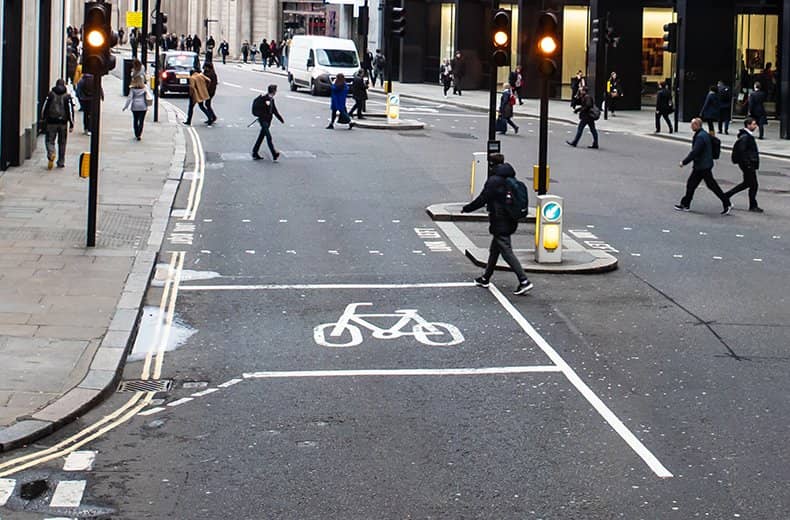
Stop line at ‘Stop’ sign
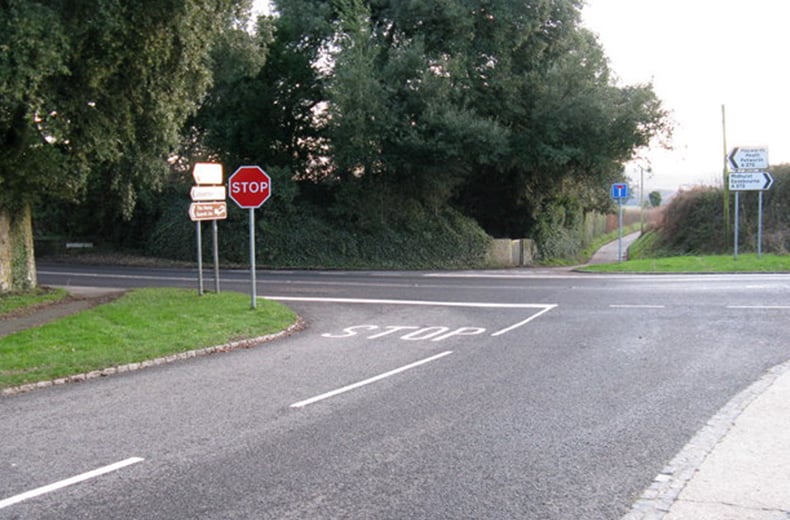
A thicker white line is less common than the one found alongside traffic lights, and appears next to stop signs.
The marking is a reminder to stop and give way to traffic before moving ahead when it is safe to do so.
You can expect to find this particular white line at junctions without traffic lights.
Give way to traffic on major road
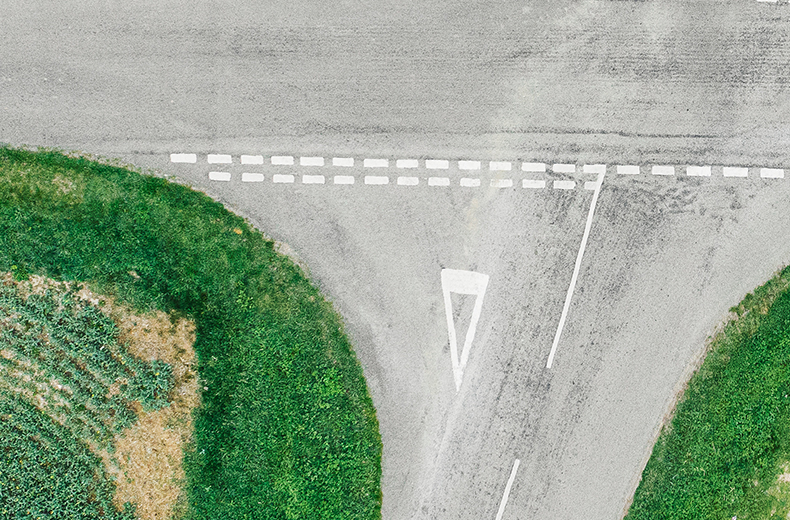
These white, double broken lines tell motorists to give way to traffic on major roads. Drivers won’t always have to stop at this line, but must keep an eye out for traffic crossing their path to do so.
The common road marking can appear at mini roundabouts and junctions with major roads.
Give way to traffic from the right at a roundabout
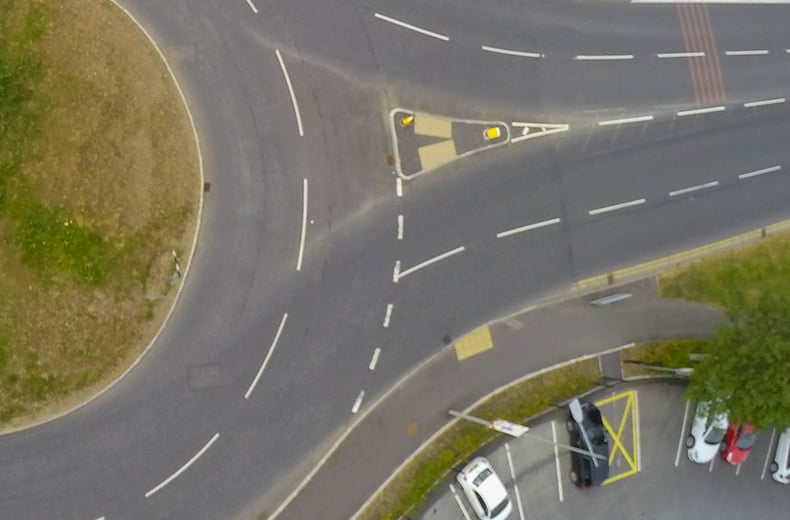
This broken white line is a reminder to give way to traffic from the right at roundabouts. You can expect to find these at larger roundabouts.
Give way to traffic from the right at mini roundabout
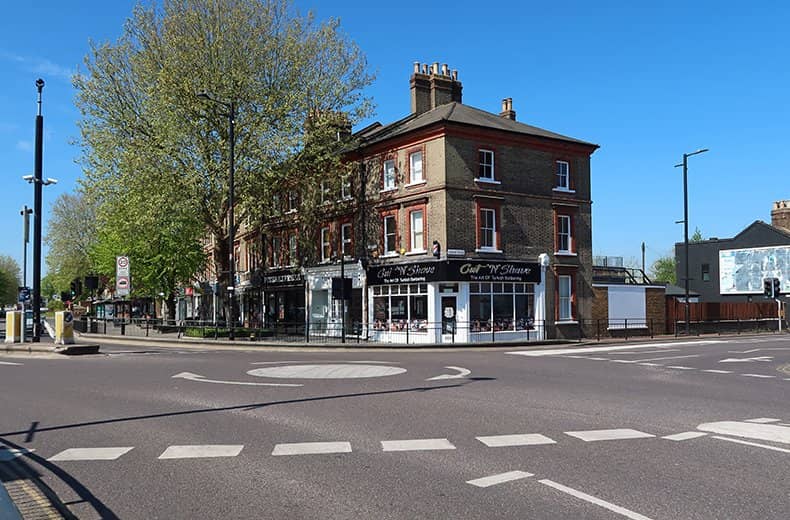
A ‘chunkier’, broken white line indicates that you must give way to traffic from the right at mini roundabouts. These smaller junctions are common on local roads.


Along the road
Read on for road markings painted along the carriageway:
Edge line
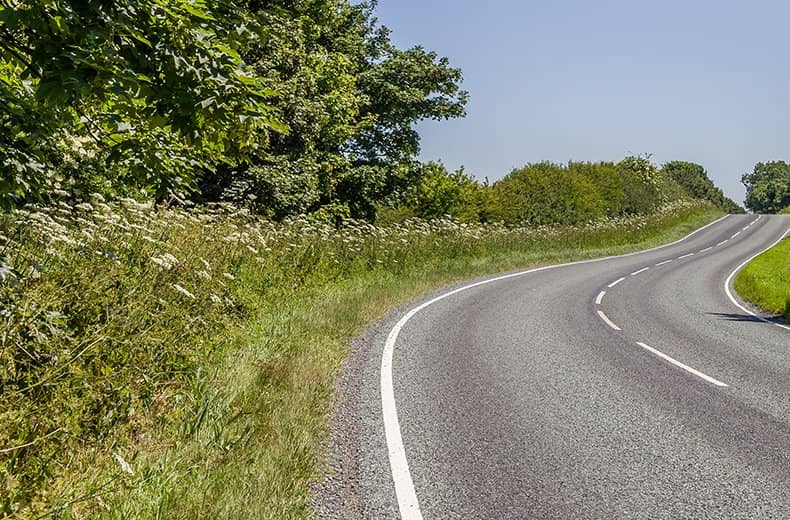
Edge lines are white in colour and appear on the left-hand side of the road.
The lines are sometimes ribbed to alert drivers they’re straying off the road and known as raised profile edge lines.
They mark the edge of the carriageway and act as a useful guide to maintain a safe, lateral position on the road. You can expect to find these in areas prone to fog and mist, at sudden changes of road width and on unlit stretches of road.
Centre line
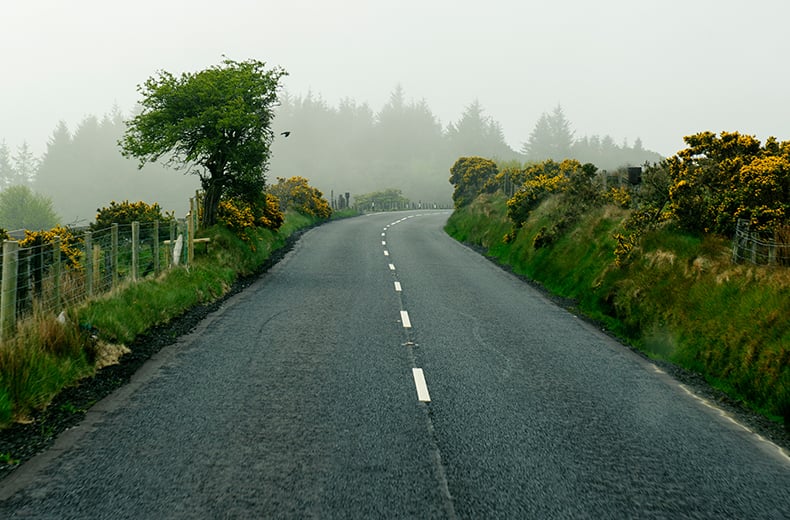
Centre lines are white and appear broken in the middle of the road.
They separate opposing flows of traffic and can vary in length and gap size between lines depending on speed limit. These are probably the most common marking you’ll encounter when driving.
Hazard warning line
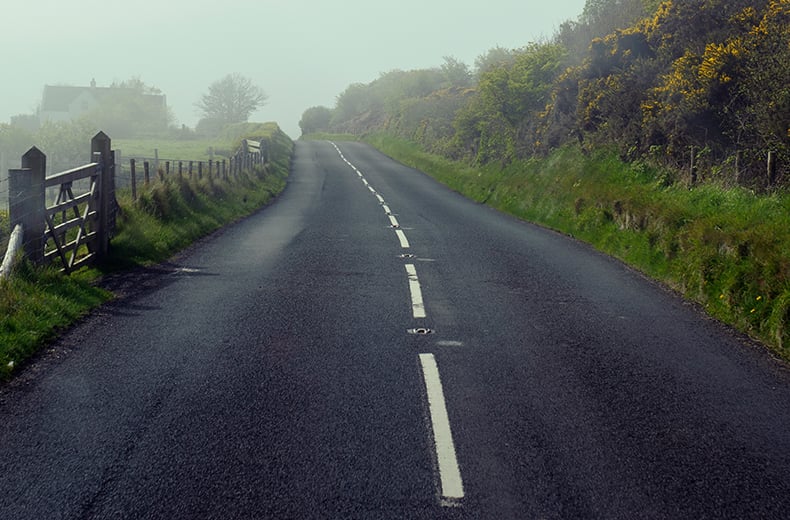
Hazard warning lines are similar in appearance to centre lines with one key difference, the painted sections are longer in length than the broken unpainted stretches.
They only appear when a hazard isn’t immediately obvious. Look out for them when approaching junctions or a central refuge.
Double white lines
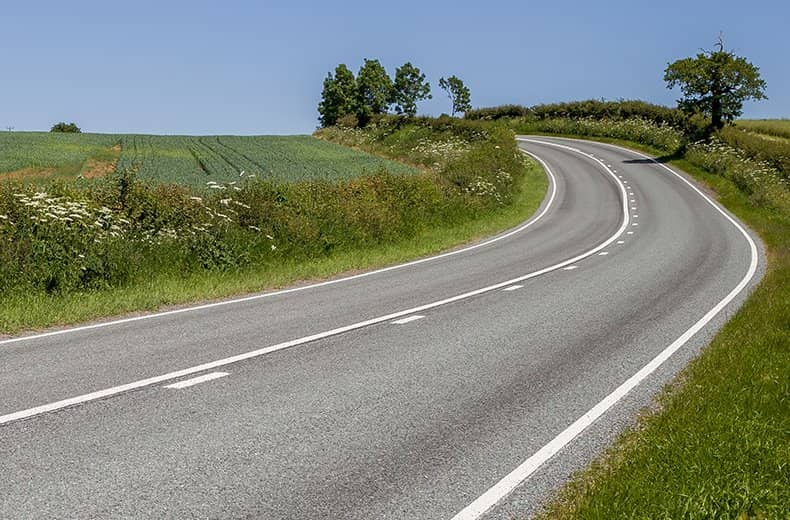
Double white lines can appear in a number of ways; where the line nearest to you is broken, where the line nearest to you is solid and, finally, where both lines are solid.
Double white lines where the nearest line is broken
Rule 128 of the Highway Code says you may cross the lines to overtake if it is safe and you can complete the manoeuvre before reaching a solid white line on your side.
Double white lines where the nearest line is solid
Rule 129 of the Highway Code says you must not cross or straddle these lines unless it is safe and you need to enter adjoining premises or a side road.
“You may cross the line if necessary, provided the road is clear, to pass a stationary vehicle, or overtake a pedal cycle, horse or road maintenance vehicle, if they are travelling at 10 mph (16 km/h) or less.”
Double white lines where both are solid
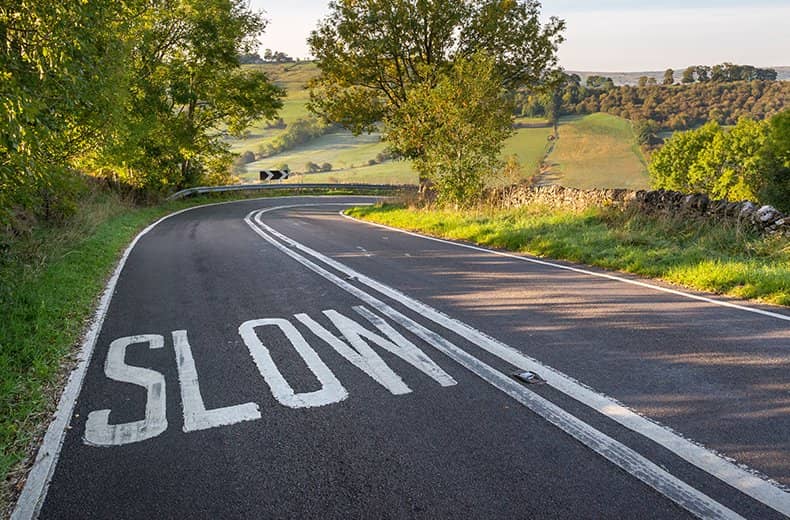
These are used to prohibit drivers from travelling in an area of the road used by the opposing flow of traffic, generally where overtaking visibility is restricted.
You must not stop on roads marked with double white lines.
- 17 things your driving instructor never taught you
- The Highway Code - Common UK road signs and what they mean
- How to pass your driving test - a full guide from novice to pro
- Did you know that we offer specialist learner driver insurance?
Areas of white diagonal stripes
.jpg)
White diagonal stripes are used to separate lanes or to protect traffic turning right.
According to Rule 130 of the Highway Code if the area is bordered by a broken white line you shouldn’t enter unless completely necessary and it’s safe to do so.
If the area is marked by chevrons and bordered by solid white lines you MUST NOT enter it except in an emergency.
Lane line
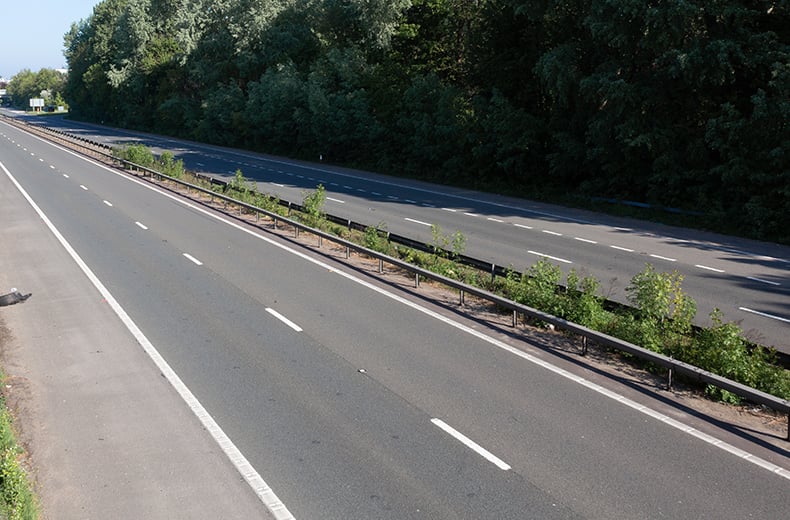
Otherwise known as lane dividers, these markings are white in colour and feature short, broken white lines which you should drive within.
You can expect to find them on wider roads where they’re used to safely divide driving space.
Along the edge of the road
Markings along the edge of the road usually relate to parking and waiting rules. The most common examples feature below:
Single yellow line
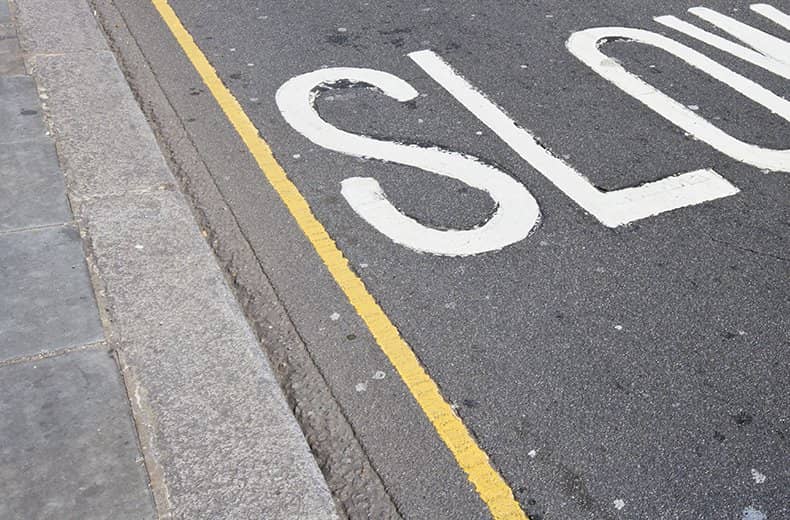
Single yellow lines are found on the edges of roads and indicate that drivers should never wait on this section between the times given on nearby signs.
If there are no accompanying signs, waiting restrictions apply everyday including Sundays and Bank Holidays. They are commonly found on residential streets.
Double yellow lines
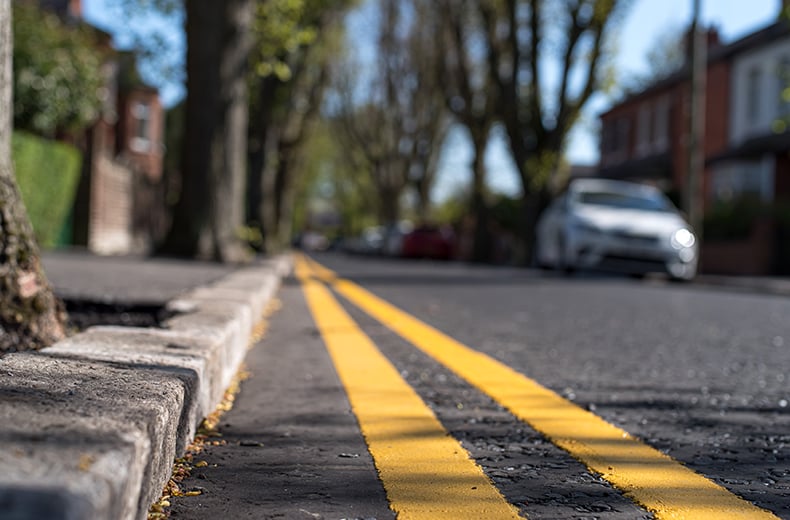
Double yellow lines appear on the edge of roads where no waiting is allowed at any time.
In some cases, nearby signs indicate seasonal restrictions. You can find them on many busier roads.
White bay markings
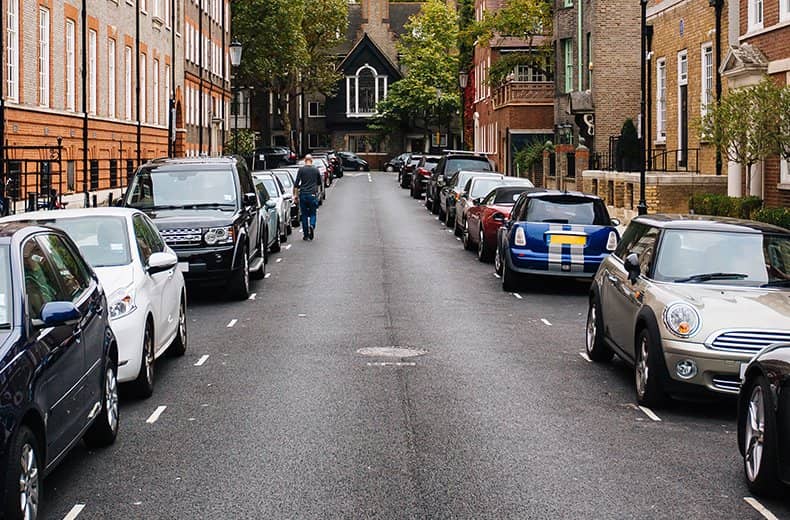
White bay markings are rectangular in shape and made up of broken lines. Nearby signs indicate the duration of waiting or parking time permitted during the dates and time shown.
If there are no accompanying signs, waiting times are restricted to the duration specified throughout the whole year, including Sundays and Bank Holidays.
Loading bays
Loading bays are similar in appearance to other white parking bays, rectangular in shape and made up of a broken white line.
The words “loading only” appear along the edges of the bay and an accompanying white sign shows whether parking in the bay is limited to goods vehicles, and the times at which restrictions apply.
Parking without loading is prohibited in these bays and they’re normally found along high streets and outside shop parades.
Named bays
Named bays are rectangular in shape and made up of a broken white line. Words such as “DOCTOR” or “POLICE” appear beside the bays to show who they’re reserved for.
The markings can appear in a number of areas, especially those popular with car-sharing services, where the words “CAR CLUB” are painted.

RAC Breakdown Cover
Limited time offer.
*£7 a month for new, single vehicle Basic cover. ^For all named members when added to new Extra or Complete cover. Included in Family cover as standard. Excludes Basic cover. Ends 08/05/24, 7am.

On the kerb
Markings painted on kerbs usually relate to loading rules. Read on for some examples:
Double yellow kerb lines
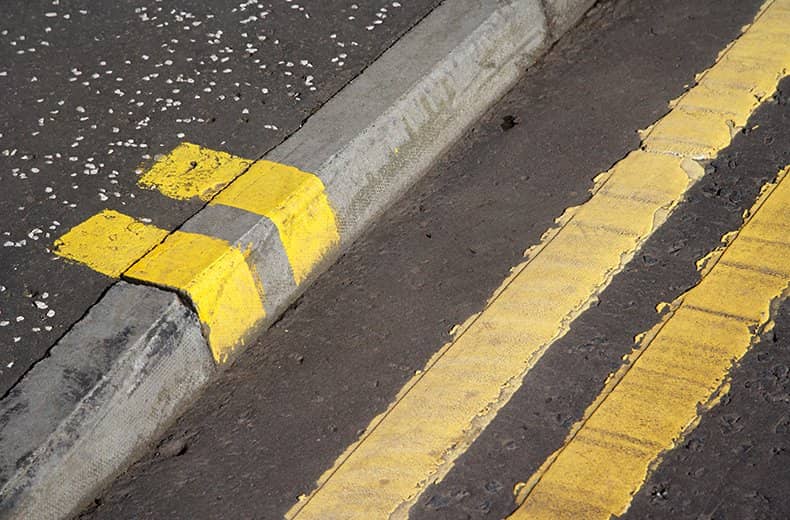
Double yellow lines painted across kerbs indicate that loading or unloading is prohibited at all times.
The kerb marking usually appears with a white sign reading “No loading at any time”. Drivers may stop near double yellow kerb lines to drop off and pick up passengers.
Like single yellow lines, these markings often appear on high streets and outside shop parades.
Single yellow kerb line
Single yellow lines are sometimes painted across kerbs to show that loading and unloading is restricted in that area.
You should always check nearby signs for enforcement times and know that when days aren’t specified, rules apply throughout the year.
Drivers may stop near single yellow kerb lines to drop off and pick up passengers. You can expect to find these along high streets and near shop parades.
Other road markings
Read on for more markings you may encounter while at the wheel:
School keep clear
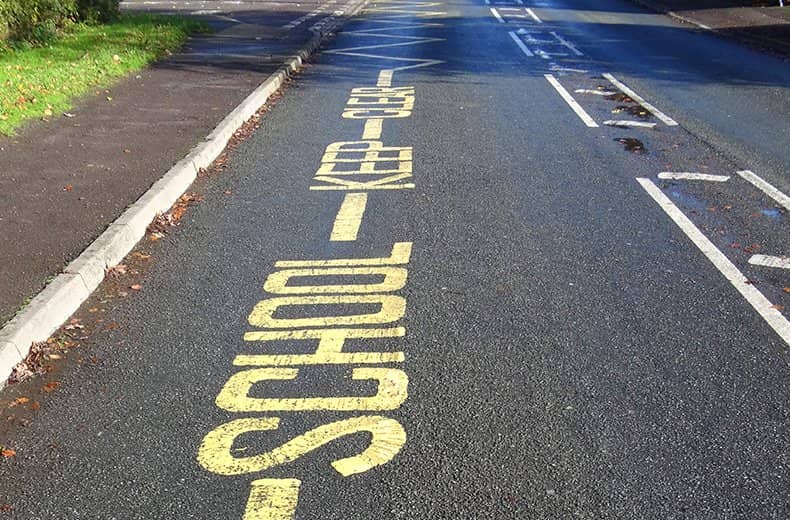
Yellow zig-zags that appear with the words “SCHOOL KEEP CLEAR” are painted to show stationary vehicles are prohibited, even if picking up or dropping off children to school.
The markings are found outside and close to schools.
Give way

A triangle pointing towards your car and featuring a thicker, straight line further away from your vehicle, indicates a give way line ahead. After seeing the marking, you should slow down and prepare to stop to let other road users pass.
You can find the markings before a number of junctions and roads with varying widths, where only one vehicle is permitted to pass.
Bus stop
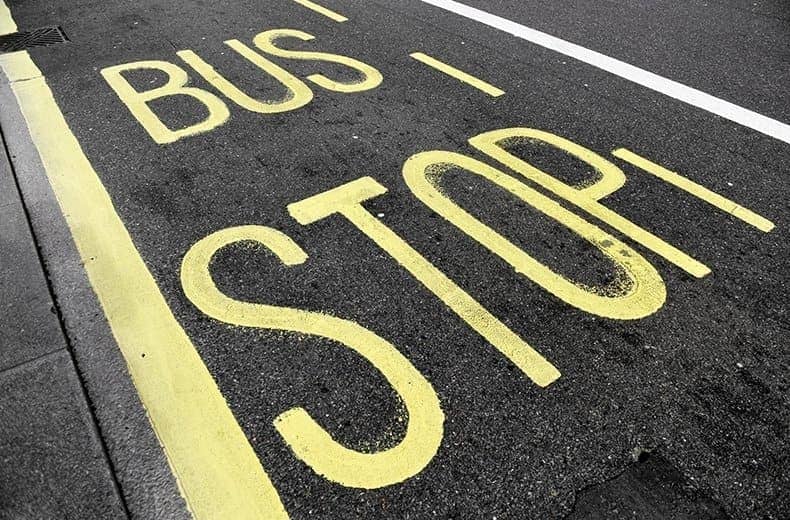
Bus stop markings are rectangular and made up of a yellow, broken line with the large words “BUS STOP” painted inside.
You mustn’t park within the marking at any time and can expect to see them across a range of roads.
Bus lane
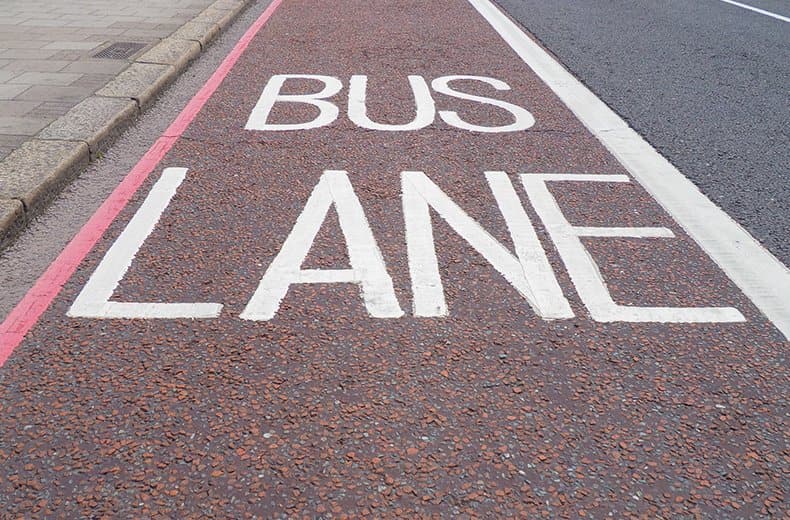
Lanes reserved for buses are clearly marked with the words “BUS LANE” throughout, and are usually accompanied with signs that indicate if any other vehicles are ever permitted to use them.
Rule 141 of the Highway Code says that “You may enter a bus lane to stop, to load or unload where this is not prohibited.”
Bus lanes are often found on wider roads in built-up areas to prioritise travel for larger groups of passengers.
Box junction
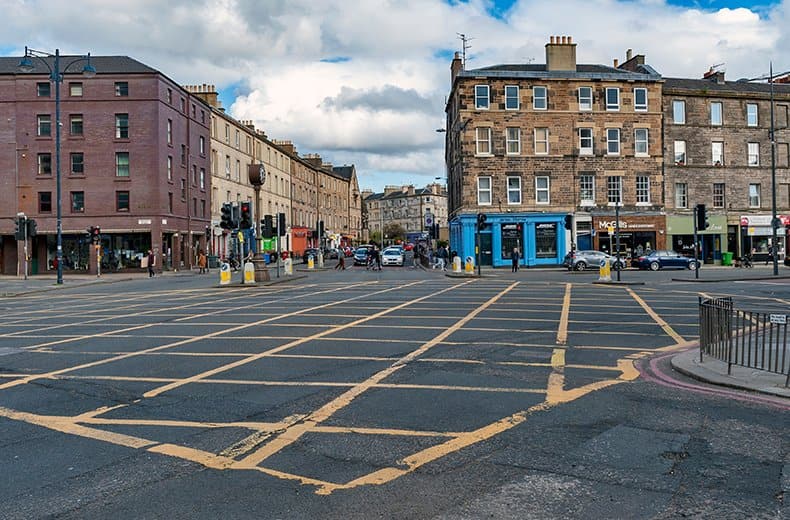
The yellow boxes filled with criss-crossing yellow lines are known as box junctions.
Although you must not enter the box until your exit road is clear, you may wait in one if you want to turn right and are only stopped by oncoming traffic or other vehicles waiting to turn right.
The boxes appear at busy junctions to ensure the flow of traffic and some signalled roundabouts, where you must not stop in them at all. Learn more about yellow box junctions.
Keep clear
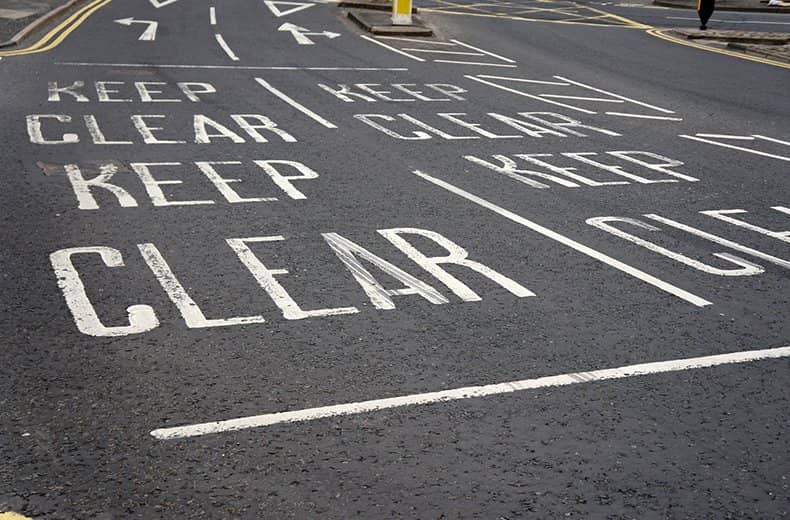
‘Keep clear’ sections of road are clearly labelled in large white font with lines above and below the text to show the limits of the no-stopping area.
Unlike box junctions, there are no situations where your vehicle can be on these markings. You can find them where traffic would otherwise prevent cars from turning.
Labelled lanes
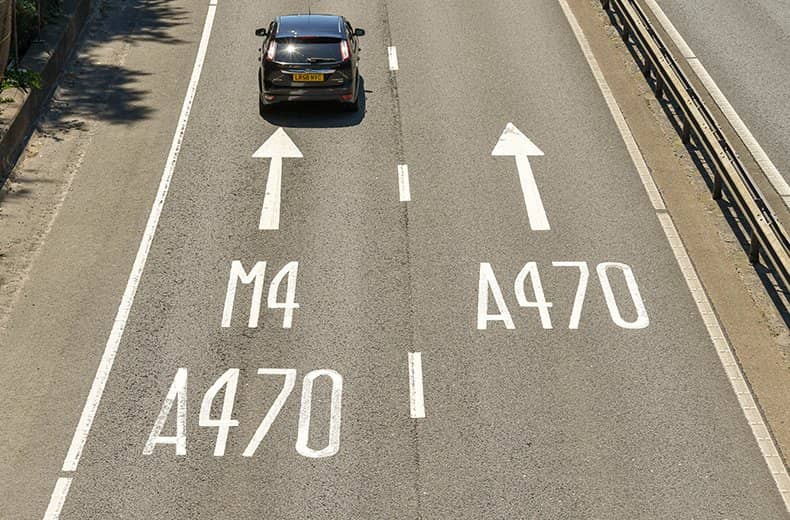
On wider roads and motorways, you’ll often see lanes labelled with the name of locations and routes ahead to help you move into the correct lane.
They appear when approaching slip roads, flyovers, roundabouts and many other junctions.
Learning to drive?
It's a good idea to learn what each road marking means with an interactive app. Driving Theory Test UK is a great place to start, with all necessary learning materials, hazard perception clips and Highway Code info included. You can download it here:
UK road markings - FAQ
- What does a single yellow line mean on the side of the road?
A UK road with single yellow lines means that there are parking and waiting restrictions in place. You can park to load/unload for up to 40 minutes or drop/pick-up someone for up to five minutes..
- What does single yellow line mean UK?
It means that there are parking, unloading and waiting restrictions in place for all drivers.
- What is the difference between single and double yellow lines?
Single yellow lines on UK roads signify waiting, unloading, and parking restrictions. These are often time sensitive and there will be signs indicating when they are in force. However, two yellow lines means parking and waiting are prohibited at all times.
- Is parking on double yellow lines an Offence?
The Highway Code states that double yellow lines mean you must not stop, park, or wait for any period of time – or for any reason. That means drivers who park on double yellow lines could be issued with large fines – even if they’ve broken down and need assistance.
- What is a marker post on a motorway?
Blue marker signs on a motorway are used to help drivers pinpoint road locations for maintenance and emergency services. They will also show the direction to the nearest emergency roadside telephone.
- What are the numbers on the side of the motorway?
The blue motorway marker signs will come with three pieces of information you will need to give to breakdown or emergency services should they be needed. The top line shows what motorway you are on. You will then see an A or B – this shows the direction you’re travelling in. And the bottom line states how far you are from a certain point on the road network.
Black Box Car Insurance
Helps young and new drivers save money by rewarding safe driving.






























